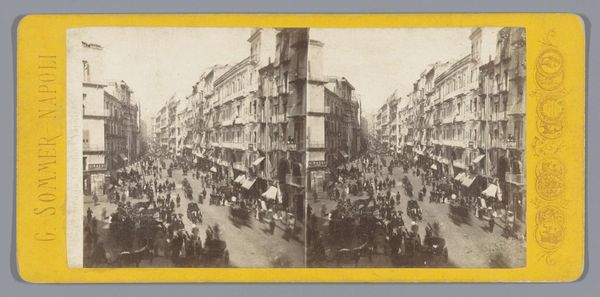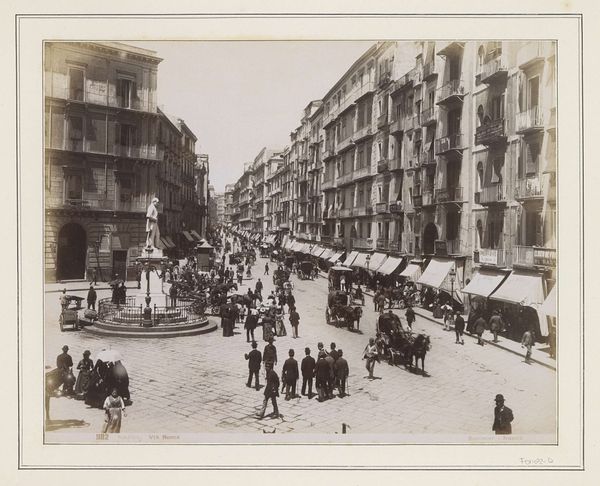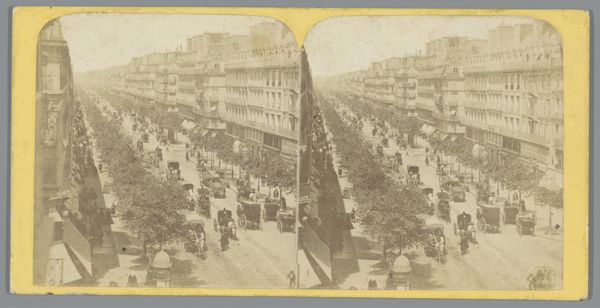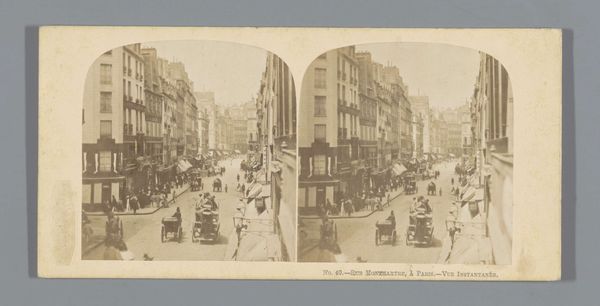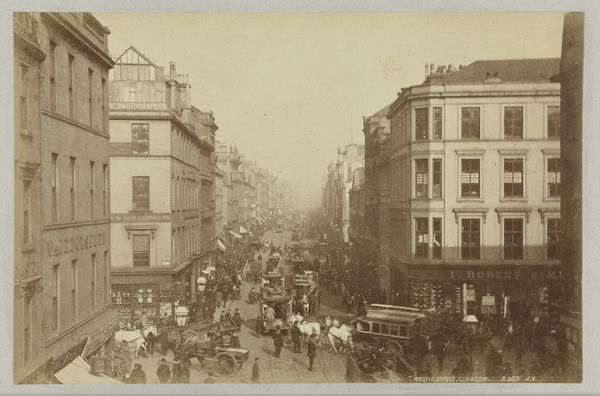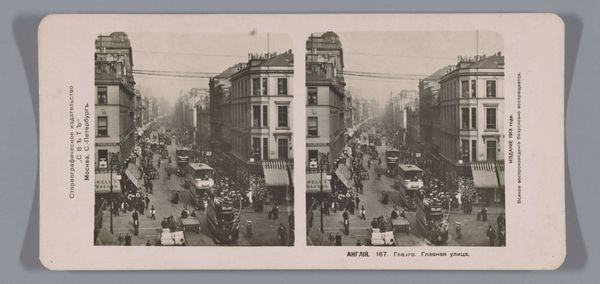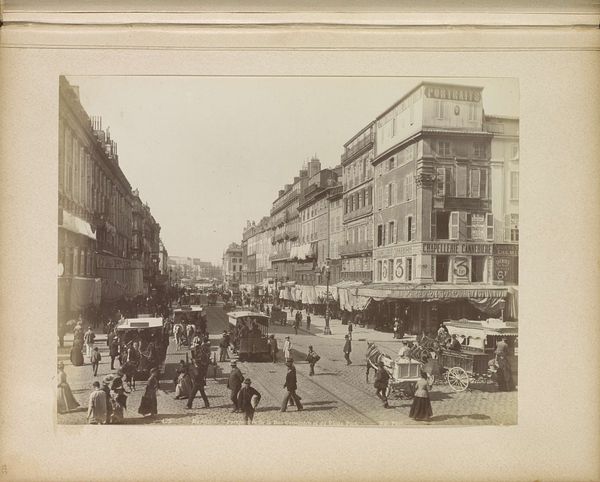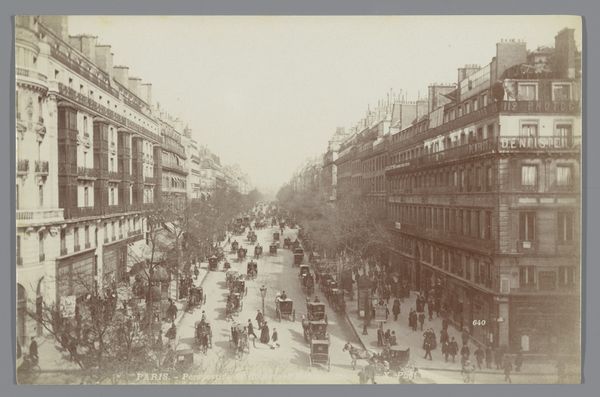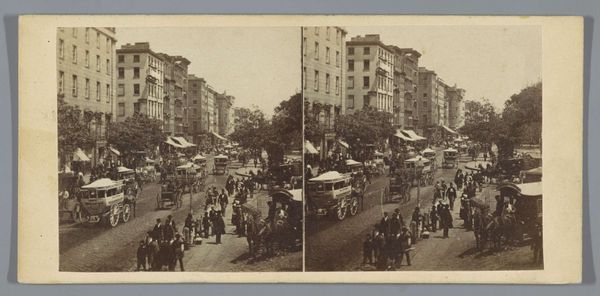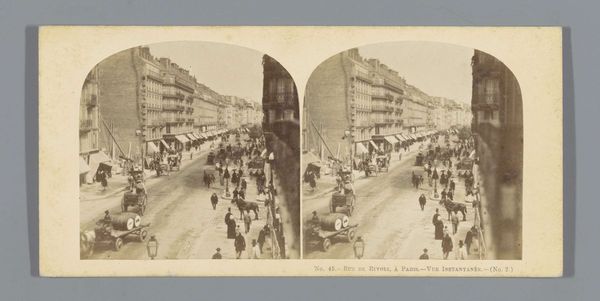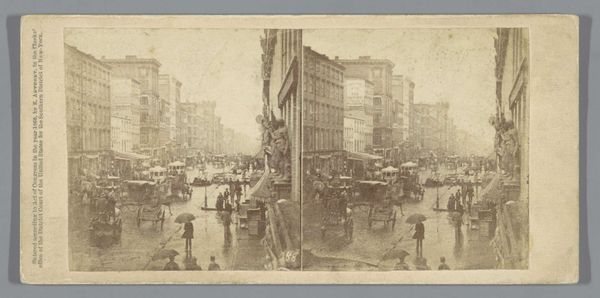
photography, albumen-print
#
photography
#
cityscape
#
street
#
albumen-print
#
realism
#
statue
Dimensions: height 83 mm, width 174 mm
Copyright: Rijks Museum: Open Domain
Curator: Let’s turn our attention to this vibrant albumen print from between 1860 and 1880, attributed to Giorgio Sommer: a view of the Via Toledo in Naples. Editor: What a dynamic composition! It's a bustling street scene. I’m immediately drawn to the energy of the crowd. So many figures caught in motion, the architectural lines receding into the distance—it really conveys a sense of the city's pulse. Curator: It's quite a feat, capturing that much detail with the photographic technology of the time. The albumen print process involved coating paper with egg white, making it incredibly sensitive to light, allowing for this sharpness and range of tones. And the social context...Naples in that era was undergoing immense transformation. Editor: Precisely! You see it reflected, I think, in the different classes mingling on the street. The carriages and more formally dressed individuals speak of a certain affluence, while others are clearly engaged in more quotidian activities—labor, commerce, perhaps even survival. Curator: Absolutely. Sommer was a commercial photographer; this wasn't simply art for art's sake. He was catering to a growing tourist market, offering a slice of Neapolitan life, but curated and easily consumed. Think of this as a flattened space for new markets and commercial exchanges. Editor: Right. And in considering this work within photography’s broader history, we can examine its use in shaping perceptions. Naples, then as now, was often romanticized or exoticized for outsiders. We should always consider what’s included—and excluded—from such a manufactured view. Curator: Indeed. It makes you wonder about the lives of those faceless figures that are caught, almost unwittingly, in the crossfire of the photographic technology from the past. What about their stories? The whole question of production matters here—laborers produced this image and others are caught at labor within the image itself. Editor: Agreed. Understanding the intersection of photographic processes, the socio-economic reality of 19th-century Naples, and even Sommer’s own positionality as a photographer is essential for deconstructing the multiple layers embedded in what appears at first glance a straightforward depiction of urban life. Curator: Examining the materials and mode of its creation offers us unique insights into the exchange, the production, and consumption of images—a sort of historical echo that continues to resonate today. Editor: And seeing that resonance helps us to reframe not only the art historical narratives but also to see, perhaps, the complex relationships between class, labor, and representation, that continue shaping our experience and vision of Naples.
Comments
No comments
Be the first to comment and join the conversation on the ultimate creative platform.
